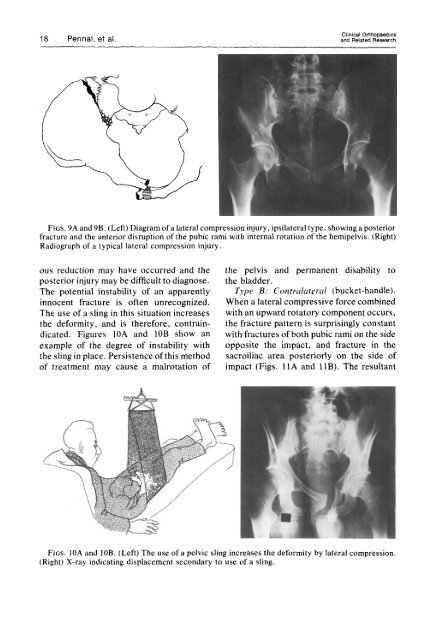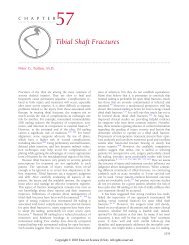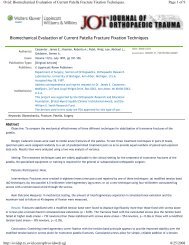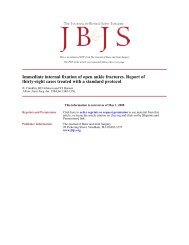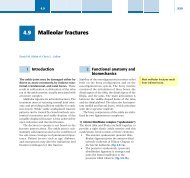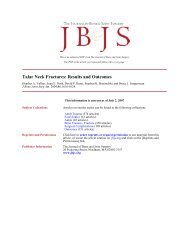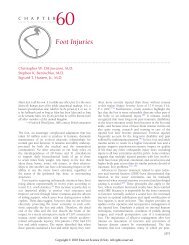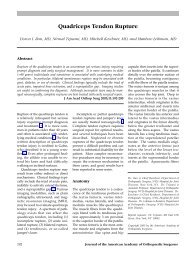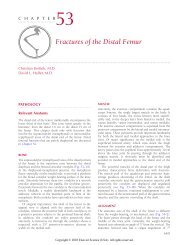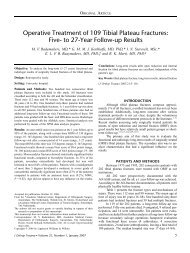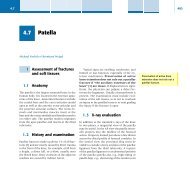Pelvic Disruption: Assessment and Classification
Pelvic Disruption: Assessment and Classification
Pelvic Disruption: Assessment and Classification
Create successful ePaper yourself
Turn your PDF publications into a flip-book with our unique Google optimized e-Paper software.
18 Pennal, et al.Clinical Orthopaedics<strong>and</strong> Related ResearchFIGS. 9A <strong>and</strong> 9B. (Left) Diagram of a lateral compression injury, ipsilateral type, showing aposteriorfracture <strong>and</strong> the anterior disruption of the pubic rami with internal rotation of the hemipelvis. (Right)Radiograph of a typical lateral compression injury.ous reduction may have occurred <strong>and</strong> theposterior injury may be difficult to diagnose.The potential instability of an apparentlyinnocent fracture is often unrecognized.The use of a sling in this situation increasesthe deformity, <strong>and</strong> is therefore, contraindicated.Figures 10A <strong>and</strong> 10B show anexample of the degree of instability withthe sling in place. Persistence of this methodof treatment may cause a malrotation ofthe pelvis <strong>and</strong> permanent disability tothe bladder.Type B: Contralutrrml (bucket-h<strong>and</strong>le).When a lateral compressive force combinedwith an upward rotatory component occurs,the fracture pattern is surprisingly constantwith fractures of both pubic rami on the sideopposite the impact, <strong>and</strong> fracture in thesacroiliac area posteriorly on the side ofimpact (Figs. 11A <strong>and</strong> 11B). The resultantFIGS. 10A <strong>and</strong> 10B. (Left) The use of a pelvic sling increases the deformity by lateral compression.(Right) X-ray indicating displacement secondary to use of a sling.


